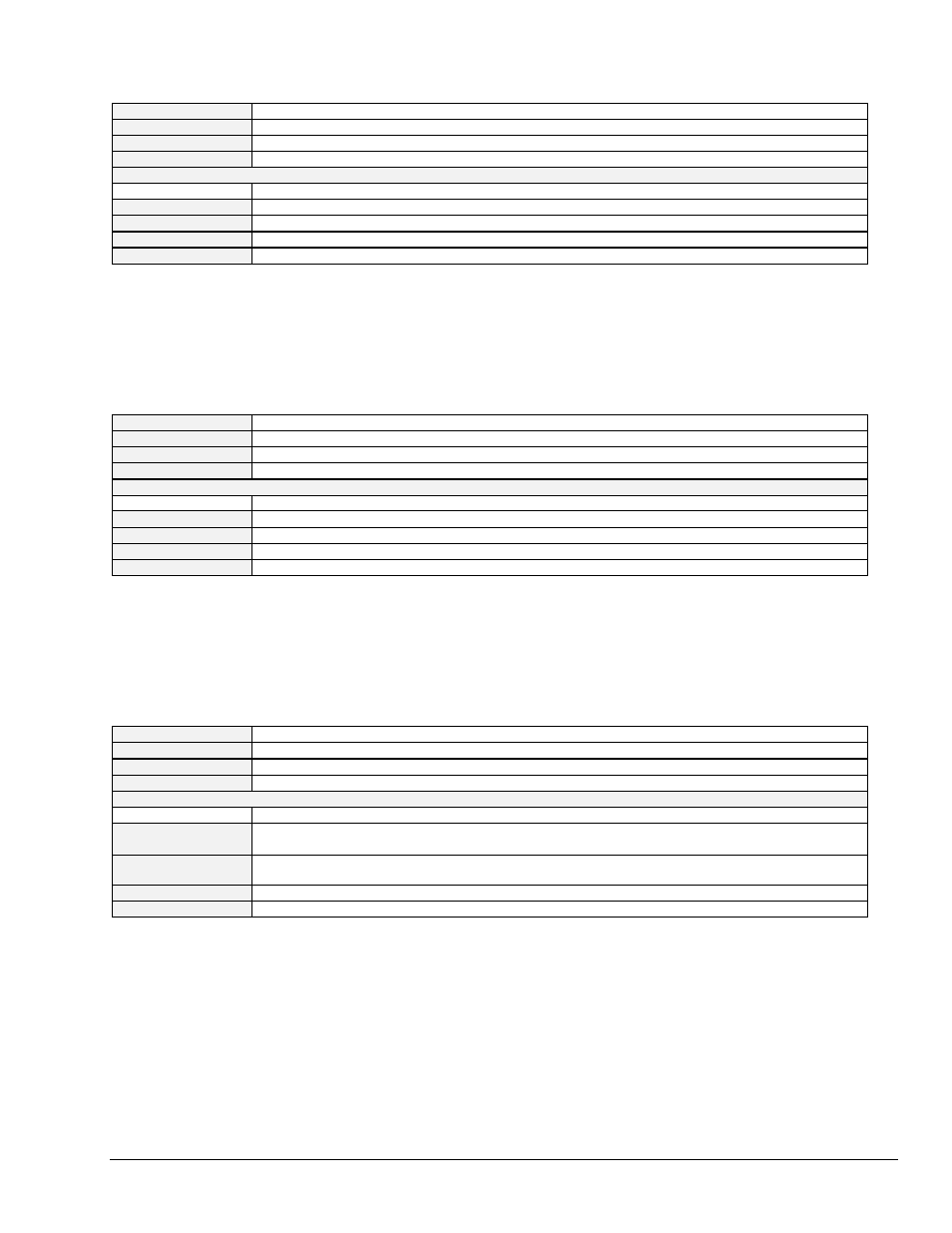Daqadctransferstart, Daqadctransferstop, Daqautozerocompensate – Measurement Computing TempBook rev.3.0 User Manual
Page 143

TempBook User’s Manual
daqCommand Reference (Enhanced API) 11-19
daqAdcTransferStart
DLL Function
daqAdcTransferStart(DaqHandleT handle);
C
daqAdcTransferStart(DaqHandleT handle);
Visual BASIC
VBdaqAdcTransferStart&(ByVal handle&)
Delphi
daqAdcTransferStart( handle:DaqHandleT )
Parameters
handle
Handle to the device to initiate an ADC transfer
Returns
DerrNoError
- No error (also, refer to API Error Codes on page 11-39)
See Also
daqAdcTranferSetBuffer, daqAdcTransferGetStat, daqAdcTransferStop
Program References
ADCEX1.C, DYN32ENH.C, DAQEX.FRM (VB), ADCEX.PAS (Delphi)
Used With
All devices
daqAdcTransferStart
allows you to initiate an ADC acquisition transfer. The transfer will be
performed under the current active acquisition. If no acquisition is currently active, the transfer will
not initiate until an acquisition becomes active (via the daqAdcArm function). The transfer will be
characterized by the current settings for the transfer buffer. The transfer buffer can be configured
via the daqAdcSetTransferBuffer function.
daqAdcTransferStop
DLL Function
daqAdcTransferStop(DaqHandleT handle);
C
daqAdcTransferStop(DaqHandleT handle);
Visual BASIC
VBdaqAdcTransferStop&(ByVal handle&)
Delphi
daqAdcTransferStop( handle:DaqHandleT )
Parameters
handle
Handle to the device for which the Adc data transfer is to be stopped
Returns
DerrNoError
- No error (also, refer to API Error Codes on page 11-39)
See Also
daqAdcTransferSetBuffer, daqAdcTransferStart, daqAdcTransferGetStat
Program References
None
Used With
All devices
daqAdcTransferStop
allows you to stop a current ADC buffer transfer, if one is active. The
current transfer will be halted and no more data will transfer into the transfer buffer. Though the
transfer is stopped, the acquisition will remain active. Transfers can be re-initiated with
daqAdcStartTransfer
after the stop, as long as the current acquisition remains active. The
acquisition can be halted by calling the daqAdcDisarm function.
daqAutoZeroCompensate
DLL Function
daqAutoZeroCompensate(BOOL zero);
C
daqAutoZeroCompensate(BOOL zero);
Visual BASIC
VBdaqAutoZeroCompensate&(ByVal zero&)
Delphi
daqAutoZeroCompensate(zero:longbool)
Parameters
zero
If non-zero will enable auto zero compensation in the
daqCvtTC
... functions
Returns
DerrZCInvParam
- Invalid parameter value
DerrNoError
- No error (also, refer to API Error Codes on page 11-39)
See Also
daqZeroSetup, daqZeroConvert, daqZeroSetupConvert, daqCvtTCSetup,
daqCvtTCConvert, daqcvtTcSetupConvert
Program References
None
Used With
All devices
daqAutoZeroCompensate
will configure the thermocouple linearization functions to
automatically perform zero compensation. This is the easiest way to use zero compensation with the
TempBook. When enabled, the thermocouple conversion functions will require a CJC zero reading
and a TC zero reading to precede the actual CJC and TC reading. This can easily be done by
configuring the scan group to read:
•
channel 18 using the TempBook CJC gain code (CJC zero)
•
channel 18 using the gain code of the connected TC (TC zero)
•
channel 16 using the TempBook CJC gain code (CJC)
•
and finally, the thermocouple channels using the gain code of the connected thermocouples.
Note: the offset of the real CJC value should be specified (not the offset of the CJC zero) when
calling the thermocouple linearization setup functions.
